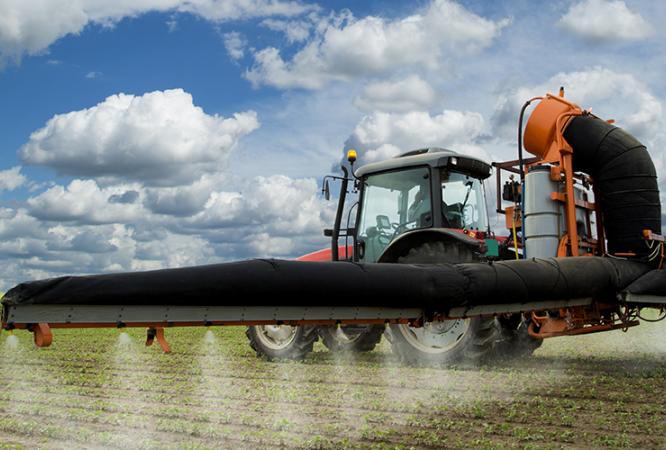The field trial we conducted in Brazil showed that foliar spraying of Haifa Bonus has positive effect on the yields, and also increased the tolerance to fungal diseases

Brazil is the second-largest producer of Soy in the world. The Brazilian exports of soy (beans, meal and oil) grew from 4.2 billion US$ in 2000 to 17.2 billion US $ in 2009, according to WTO data, which marks the main increase in exports of an agricultural product.
Based on this information, Haifa South America performed a field trial with the Haifa-Bonus product. The objective was to find out what is the real effect on soybean, and to increase the demand of foliar potassium nitrate in soy.
The experiment was carried out in the research area of the Foundation for Research and Technological Development of Rio Verde, in the municipality of Lucas do Rio Verde - Mato Grosso State.
The experiment was set up in randomized blocks with three treatments in seven repetitions. Each plot had the dimensions of 8 planting rows with 6 meters long, totaling 21.6 m² per share for a total of 21 plots. The treatments used in the experiment are described in Table 1.
The spraying solution pH of the testimony was 5.20 and in the treatment with the addition Bonus at 6.0kg.ha-1(5%) dosage, the pH was 5.15. When using 8.0kg.ha-1 of Haifa-Bonus (6.6%) the pH of the solution was 5.02. There was a slight reduction of the pH of the solution when increasing the fertilizer dosage. However, this pH reduction was not significant, causing no losses in final spraying quality.
The content of macro and micronutrients in the leaf tissue of soybean samples collected at the R1 stage presented higher N in the treatments with Haifa-Bonus when compared to the untreated control.
The staggered application aiming to obtain 40kg.ha-1 of Haifa-Bonus resulted in greater plant height and number of pods per plant when compared to other treatments (Table 2). The height of the plants presented positive response to the increasing of Haifa-Bonus dosage application. Although there was no statistical difference in number of pods per plant, the figures suggest that the plant has a positive response when sprayed.
As expected, higher values were observed for 1,000 grain weight and yield on treatment sprayed with 40kg.ha-1 of Haifa-Bonus when compared to the control, and to the one with 20 kg ha-1 (Table 3). The higher value of 1,000 grain weight reflected in a higher final yield when spraying 40kg.ha-1 of Haifa-Bonus. This result reflects the physiological benefit of K in the translocation of energetic compounds to the grain and consequently better filling of the grains.
During this season, the volume of rain in January and February was similar to previous years; however, these rains were well distributed throughout the period that resulted in cloudy days with low sunlight incidence. Coupled with low light, we had a high pressure of inoculum of the soybean rust. Visually it was not observed a lower incidence of soybean rust in the treatments with Haifa-Bonus when compared with the control. However, treatments with Haifa-Bonus had greater plant vigor when compared to plants that received no fertilizer during the reproductive stages of crop, which may be a consequence of a lower incidence of soybean rust.
These results confirmed the expected positive effect of Haifa Bonus in the filling of grains and consequently their benefit to support high yields. Moreover, due to high incidence of soybean rust, this trial signaled a positive effect in increasing the soy tolerance to soybean's fungal diseases. These results can be used as another important tool for disclosing the benefits of Haifa-bonus.




